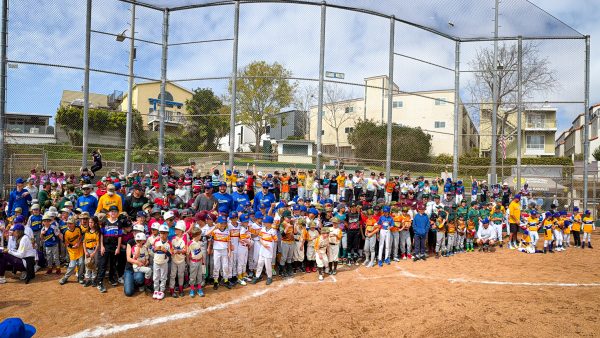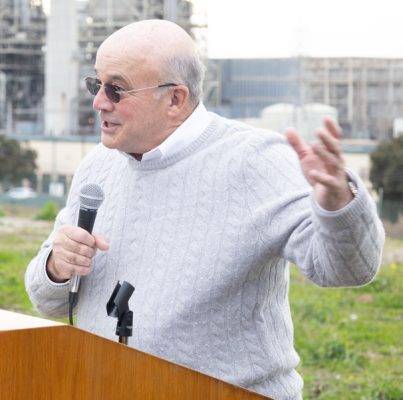
The South Bay’s growing population of senior citizens have latched on to the sport of pickleball, only to find that there are only so many places to play. You could say it’s a dilly of a…oh, nevermind.
Advocates for pickleball will appear next week before the Hermosa Beach’s Parks, Recreation and Community Resources Advisory Commission, lobbying the city to paint pickleball lines on one of Hermosa’s eight tennis courts. Proponents are likely to face opposition from tennis players, who fought off a similar proposal a year and a half ago.
With its expanding roster of adherents, pickleball has become the latest sport to bump up against the limits imposed by the city’s finite recreational space. Hermosa’s citizenry is remaining active throughout life and finding new ways to do so, adapting to injuries and adopting new sports. But the embrace of new sports challenges recreational facilities, which have existing devotees who worry about the loss of their own opportunities.
For example, in a contentious meeting earlier this year, the commission debated the addition of courts for beach tennis on the sand north of the pier, while simultaneously considering proposals to expand the number of volleyball courts. After complaints about delays from beach tennis players, the City Council approved the added courts last week, while additional volleyball space remains in limbo.
Pickleball resembles tennis, both table and traditional. Four players ring a 36-inch net, using wiffle balls and composite rackets. The first two hits of every volley must bounce once before being returned, and players are not permitted to hit overhand spikes from inside “the kitchen,” a zone that extends seven feet from each side of the net. One traditional size tennis court can fit four pickleball nets, for a total of up to 16 players at once.
Hermosa Beach resident Lois Tuey discovered the game while temporarily living in Las Vegas to take care of an ailing relative. Like many players, she described becoming “addicted” to the game, and drove back and forth from Las Vegas to the South Bay every Tuesday to take part in local games. She has become one of the sport’s chief advocates, leading the charge during the previous attempt to get court space in Hermosa.
Tuey, who played competitive tennis in college, said the sport has attracted a large number of players who, due to injuries, find that they can no longer compete in the sports they once did, including tennis and volleyball.
“A lot of us, we’re older but we’ve always been athletes. We’re looking for a way to just keep playing,” she said.
Players acknowledge that lack of familiarity is one of the sport’s most significant obstacles.
“People hear ‘Pickleball,’ they think, ‘Oh, what a stupid name.’ And it is kind of a silly name. But I don’t think the city realizes what this is all about,” said Hermosa resident Lisa Meenan.
Meenan, who has become an ambassador for Pickleball international, pointed to Tim Moore, a Manhattan Beach resident, estimates he has lost 40 pounds since taking up pickleball. He has a hip replacement, which stymied previous attempts at getting in shape.
“I played basketball till I was 52 and wore out my knees. But I can still play this,” Moore said.
For the past two Fridays, the group has been making use of Court Three at the Community Center to demonstrate interest in the sport; 46 players showed up last Friday. They used tape to set pickleball lines and brought their own nets. Their hope, however, is that the city will add painted lines at the tennis courts near Clark Field, which are known as the Kelley Courts.
But when a similar proposal last came before the city, commissioners were hesitant to act, perceiving that tennis advocates greatly outnumbered pickleball players. Letters sent to the commission in opposition to the proposal also outnumbered those in favor.
“How many tennis proponents are here? How many for pickleball?” asked Commissioner Robert Rosenfeld, surveying the room and seeing more tennis players. “Do we need to know anything else?”
Pickleballers are not advocating permanently converting a tennis court. Rather, they are asking the city to paint the additional lines needed when the court is being used for pickleball. But tennis players worry that even painted lines could compromise play.
“The restriping of one even one court, I propose, not only is going to make tennis difficult visually, but as any tennis player knows, the ball reacts differently when it hits a line,” said resident Mark Warshaw at the previous meeting.
Annie Lewis, a Hermosa resident, leads pickleball clinics and also teaches tennis for the city of Manhattan Beach and at the Riviera Country Club in Pacific Palisades. She said that “blended lines,” in which pickleball lines would be shaded about 25 percent lighter or darker along the color wheel than the court surface, are more manageable to play on.
“I’m a tennis player, so I understand. For tennis players, this would be better,” Lewis said.
Tennis players said that they were not necessarily opposed to pickleball, but that courts were already impacted, and that pickleball might be better set up elsewhere, such as city basketball courts. Pickleball advocates disagree, saying that they frequently find tennis courts empty.
It’s not clear which side is right. The city has little hard data about use of recreational facilities — a fact which recently bedevilled the commission when discussing volleyball court usage — and, short of setting up a video camera and counting, such data would be hard to come by.
A kind of test case exists in Manhattan Beach. About two years ago, that city added lines to the paddle tennis courts at Manhattan Heights, then later painted pickleball lines on some of the tennis courts.
Michael Hudak, an interim recreation supervisor with the city of Manhattan Beach, said that there were some initial complaints with the painted courts at Manhattan Heights, but there are now “no issues” with the added lines.
“There was a bit of a transition period when people had to learn to cope. But the community support has been great for pickleball,” Hudak said.









